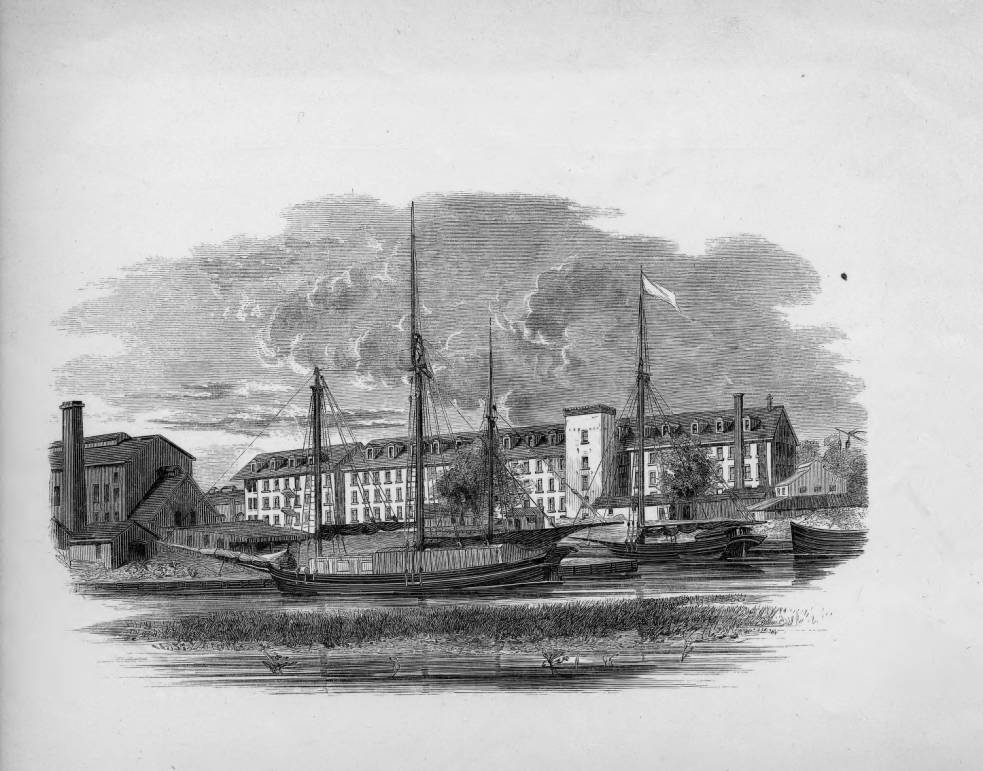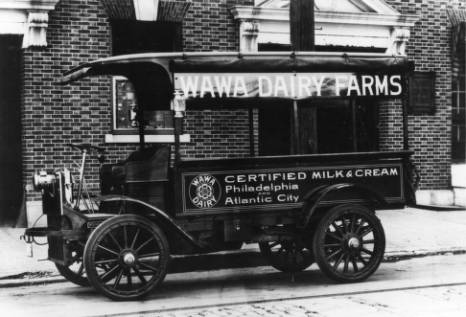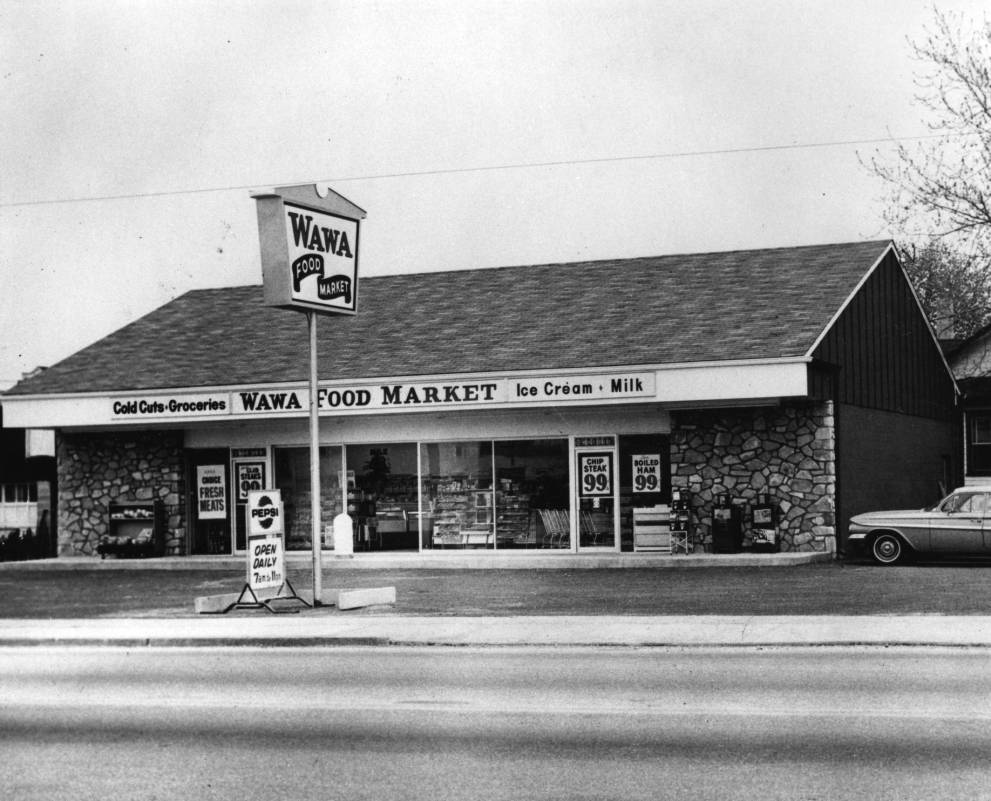In 2007, Wawa Inc. deposited a substantial number of public relations documents and images with Hagley which are now part of the AVD and Manuscripts collections. Through that deposit, Wawa is now part of the Hagley Heritage Curators program. Recently, I came across a book about the company in Published Collections written by Howard Stoeckel, their CEO, to celebrate Wawa’s 50th Anniversary in 2014. Called The Wawa Way: How a Funny Name and 6 Core Values Revolutionized Convenience, the book provides insights into their beginnings, the challenges that led to its re-invention through food stores and its fascinating corporate culture.
Although the Wawa brand is best known to consumers between Maryland and Connecticut, its heritage is far less familiar. In fact, a visit to the Wawa web site and a look at their history timeline suggests that the company started in 1964 with the opening of their first food market in Folsom, Pennsylvania: http://www.wawa.com/WawaTimeline.aspx. However, a visit to Hagley’s on-line catalog and digital exhibit reveals a much longer history that was started by David C. Wood in the early 1800s.
His first business venture was an iron furnace at Cumberland, NJ, in 1803, soon followed a larger furnace and foundry in Millville, NJ. That led to a long line of investments by the Wood family that evolved into the dairy and convenience stores which we know today.
According to Howard Stoeckel, “the furnace and foundry produced stove plates, fire backs, fence posts, and water pipe, which was timely because many cities were busy replacing old wooden water pipe systems. Millville Furnace ultimately shipped iron pipe to many cities along the Atlantic coast.” Millville piping was used in Philadelphia’s Fairmount Water Works and the Philadelphia Gas Works.
In 1850, David’s half-brother, Richard D. Wood, acquired the iron works. “R.D.” was an astute businessman and a successful Philadelphia dry goods merchant who believed in “grow what you know” when creating new businesses. In 1854, he opened a cotton mill on the Millville site to utilize excess water power on the property and to supply textiles for his dry goods store. That led to further investments in textile mills in Massachusetts and North Carolina, which operated until the mid-1960s. The liquidation of those businesses helped fund Wawa’s transformation into dairy and food stores.

The Millville Manufacturing Co. cotton mill (1871), from “A Biographical Sketch of Richard Wood”, volume 2, p.217
Stoeckel’s book tells us how the family discovered Wawa, Pennsylvania:
“By the late 1880s, R.D.'s son George was head of a large and thriving business as well as of a growing family that spent summers at various locations outside Philadelphia. In 1889, the family stayed at the Idlewild Hotel in Media, and George often rode on horseback through the surrounding countryside. He must have liked what he saw, because the following summer he rented a rambling Victorian house with a colorful red roof in a Delaware County community known by the name of its rail station: Wawa. He subsequently bought the house and called it Red Roof. Today, it and other buildings on the site are home to Wawa's corporate headquarters.”
Stoeckel also explains that “Wawa” is the Native American name for the Canada goose, which continues to appear in their branding and advertising.
The new country home allowed George Wood to explore his interests in farming and raising cows. He purchased additional land, part of which included a small dairy farm. He modernized the dairy, added sanitation practices, and used his Philadelphia business connections to create a delivery network. By 1902, Wawa Dairy Farms was in full operation.
Home delivery of milk was the standard distribution method of the day and Wawa’s trucks were a familiar sight in the Philadelphia area. However, when consumers moved to the suburbs after World War II, supermarkets became their preferred place to buy milk, butter and other dairy products. This forced a painful transition in Wawa’s business model as their success had been driven by the enhanced profit margins that resulted from direct sales to consumers.Selling through supermarkets required wholesale pricing, which shifted a large part of their profit to the supermarkets. The fact that grocery retailers often used milk and eggs as low priced “loss leaders” placed even further pressure on Wawa’s prices.

A Wawa mechanized delivery truck. The company purchased its first gasoline powered vehicle in 1914. Manufactured in Ardmore, PA, it had a two-cylinder engine that produced 20 horsepower and operated at a top speed of 17 miles per hour. It is shown here in front of the West Philadelphia milk depot.
By the late 1950s, the textile factories owned by the Wood family also began experiencing declining growth and profits, especially in New England and New Jersey. Graham Wood, George’s grandson, would lead the charge to address these business challenges.
In the late 1950s, small convenience stores were beginning to pop up in the East as a faster alternative to supermarket shopping. Like today, milk was a key part of their offering. By 1962, 7-Eleven stores, which began in Texas, had moved into the Philadelphia region. At the same time, Graham Wood was introduced to the owner of a growing chain of King Kwik Minit Markets in Cincinnati, which he wanted to better understand. He worked at one for a week and then came home with their blueprints, literally!
In September 1963, he proposed the idea of dairy-convenience stores to a hesitant board who knew nothing about food retailing. Bravely, they approved the concept and three months later, Graham was named Chairman of the Board and CEO of their newest venture: Wawa Food Markets.

The first Wawa food market on McDade Boulevard in Folsom, PA, 1964
In April 1964, the first Wawa market opened on McDade Boulevard in Folsom, PA, about 3 miles northwest of the Philadelphia International Airport. In 1965, the Wood family liquidated the last of their textile mills and the rest, they say, is history.
Thirty years later, Wawa opened their first “super food market” in Tinicum, a short distance from the original store. The figures today are impressive. According to Stoeckel, as of 2014, the company had sold 190 million cups of coffee and 60 million sandwiches a year to half a billion customers. Their ATM machines had conducted 75 million cash transactions and they pumped 1.8% of all gasoline sold in the United States! They are open 24/7, 365 days a year, and are rapidly expanding. Plans call for 18 new stores in Florida alone by 2017.
An important factor in Wawa’s success has been its ongoing ownership by the Wood family as a privately held company. In a future issue of the newsletter, we’ll talk about the company’s culture and their six core values, which have also contributed to that success.
Gene Castellano is the Business Manager for Hagley Heritage Curators.
